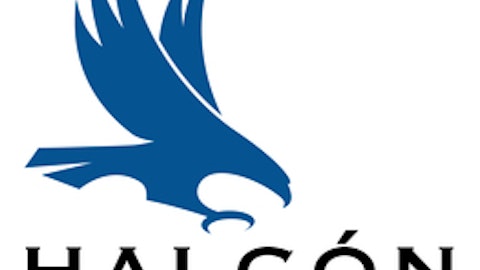In what seems like a decisive win for Cameco Corporation (USA) (NYSE:CCJ), the Canadian Nuclear Safety Commission (CNSC) awarded the company a uranium mining license that will be valid until June 30, 2021. This long-term validity of the license will allow Cameco Corporation (USA) (NYSE:CCJ) to construct and operate its massive Cigar Lake uranium project. The ultra-high-grade mine is located in northern Saskatchewan, Canada. In this article, I shall focus on Cameco Corporation (USA) (NYSE:CCJ)’s uranium outlook and why investors should focus on uranium stocks in the long term.

Long-term prospects of uranium ore
After the Fukushima disaster, Cameco Corporation (USA) (NYSE:CCJ)’s shares tumbled from almost $43 to below $17. Its shares have risen in the recent past, as Japan is currently governed by the nuclear-friendly Shinzo Abe administration. Japan’s liberal democratic party is particularly nuclear-friendly and the country will restart its nuclear reactors later this year. Moreover, countries like India, China and Russia, which reduced their nuclear energy output following the Fukushima disaster, will eventually follow Japan’s path.
All of these countries have severe energy deficits and are looking for clean and green energy that isn’t extremely expensive to produce. Of course, I shall not discuss the dangers of nuclear fuel as such, but what I want to emphasize is that the market for uranium ore will increase in the long term and will remain that way. Cameco Corporation (USA) (NYSE:CCJ) is one of the largest suppliers of uranium internationally and this increased market demand will help its shares to rise once again.
Cameco Corporation (USA) (NYSE:CCJ)’s future looks bright in uranium sector
This summer, Cameco will begin to drill into artificially frozen orebody to reduce the risk of radiation. A non-entry jet boring system will allow Cameco to collect the ore slurry through pipes so that packaged uranium pounds can be expected as early as the fourth quarter of this year. Phase one of the Cigar Lake contains higher grade uranium ore and has a proven reserve of 226 million pounds. Phase two contains 118 million pounds of lower-grade uranium ore, which is still 100 times superior to internationally available uranium grades.
Naturally, Cameco has access to some of the best uranium ore grades in the world and also the access to the most demanding markets in Asia. This clearly indicates that no matter how much Cameco’s shares have fluctuated in the past, it is a long-term investment option. Uranium will continue to be in demand as fuel and energy costs have risen sharply. More countries will begin to start their reactors to power their cities, towns and industries. Safe or unsafe, nuclear energy will remain in demand for a long time to come until a better alternative is found.
Cameco’s numbers
Cameco has a market cap of $8 billion and trades at $21. Its price-to-sales is 3.5 and its price-to-book ratio is 1.6. Cameco’s PEG ratio is 2.8, which suggests it is currently overvalued. However, we must note that these numbers should be taken with a grain of salt.
For instance, Rio Tinto plc (ADR) (NYSE:RIO), the other uranium manufacture which I will discuss, has a PEG ratio of 0.5, a price-to-sales ratio of 1.5 and a price-to- book ratio of 1.6. Though Rio Tinto plc (ADR) (NYSE:RIO) may seem like the more favorable stock to invest in, I root for Cameco. Cameco’s numbers are likely to improve when it begins to sell its uranium ore to Japan, China, Russia and India. Rio Tinto, on the other hand, is looking at stabilizing itself and has been on a divestment spree.
Larger mining companies are divesting their properties
Rossing, Rio Tinto plc (ADR) (NYSE:RIO)’s uranium mine in Namibia, reported a loss of $46.5 million in 2012. At the moment, it is struggling to survive. There was a production increase of 36% but the losses have been too huge to bear for Rio Tinto. Nearly 300 people were laid off by Rio Tinto at Rossing, in order to cut costs. Moreover, Rio Tinto is in the midst of trimming down its business, just like its competitor BHP Billiton Limited (ADR) (NYSE:BHP).
These large mining corporations have been negatively affected by reduced demand for materials and increased cost of production. Rio Tinto’s profit margin is -5.9% and that can partly be attributed to its losses in the uranium sector.
If we consider BHP Billiton Limited (ADR) (NYSE:BHP), the company scaled back a $30 billion expansion in 2012. It sold its Yeelirrie uranium deposit and made it clear to industry observers that it does not plan to be active in the nuclear sector. BHP has seen rough days too, just like Rio Tinto, thanks to reduced material prices and demand.
However, China recently assured BHP Billiton Limited (ADR) (NYSE:BHP)’s Andrew Mackenzie that it will continue to need basic materials from the top mining companies. Shares of BHP are overvalued, as the company’s PEG ratio is 5.6. Its price-to-sales is 2.3 and its price-to-book is 2.3. However, its profitability looks good with a profit margin of 14.3% and an operating margin of almost 30%.
Bottom line
BHP is the world’s largest mining company and Rio Tinto is the third largest. Cameco does not feature in the list of top 25 mining companies of the world. And that I believe is its strength. This allows Cameco to focus on uranium unlike BHP and Rio Tinto, which are both busy divesting their non-core businesses and trimming down their businesses. Uranium stocks have a great future and rising above all the other uranium stocks is Cameco.
The article Cameco Is the Shining Knight of Uranium Stocks originally appeared on Fool.com is written by Jaiyant Cavale.
Jaiyant Cavale has no position in any stocks mentioned. The Motley Fool has no position in any of the stocks mentioned. Jaiyant is a member of The Motley Fool Blog Network — entries represent the personal opinion of the blogger and are not formally edited.
Copyright © 1995 – 2013 The Motley Fool, LLC. All rights reserved. The Motley Fool has a disclosure policy.





